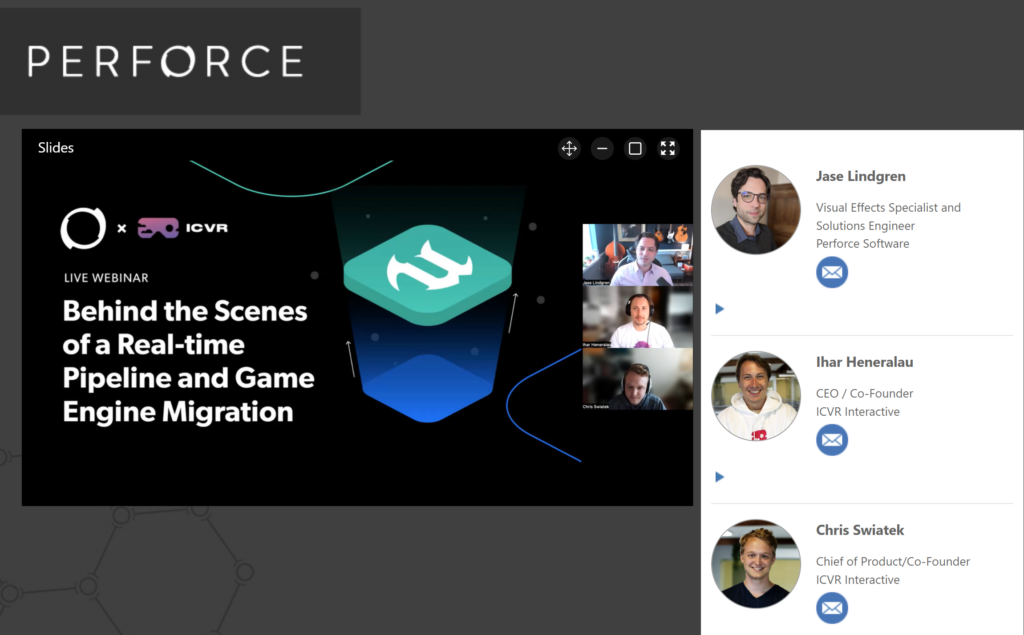M+E Connections

ICVR: How It Designed a Real-Time Multi-Studio Pipeline With Perforce
Story Highlights
ICVR and Perforce provided a behind-the-scenes look at a real-time pipeline and game engine migration on April 18, during the webinar “Perforce + ICVR: Behind the Scenes of a Real-time Pipeline and Game Engine Migration.”
The two companies were going to “get into the nitty- gritty of some of how this was done, and I hope that’s what all of you in the audience are here for today,” Jase Lindgren, senior solutions engineer at Perforce, said at the start of the presentation.
Lindgren went on to introduce Ihar Heneralau, CEO and co-founder of ICVR, and Chris Swiatek, chief of product and co-founder of ICVR, a studio and pipeline solutions developer that provides services including virtual production and game development.
Heneralau noted that his background had largely been in product design for games.
But then, however, over the past six to seven years, his studio started merging game development with services for the entire media and entertainment sector and “we started bringing the game technologies into the film and animation industry,” he said.
Lindgren pointed out that his “background before this was in VFX for film and TV for a long time [and] I love seeing companies merging gaming and film and VFX and animation all together, like ICVR does.”
 The speakers provided a quick overview of what ICVR does and then provided a look specifically at the LEGO DREAMzzz TV series that is available on Amazon Prime, Netflix and YouTube.
The speakers provided a quick overview of what ICVR does and then provided a look specifically at the LEGO DREAMzzz TV series that is available on Amazon Prime, Netflix and YouTube.
The multi-site production across the U.S. and India had limited site bandwidth and a further challenge was the huge data involved that included more than 10,000 assets with large format files, ICVR pointed out.
ICVR’s ICTools pipeline and tooling division was brought in during the Lego project’s switch from the Unity game engine developed by Unity Technologies to the Unreal Engine developed by Epic Games.
ICVR is also an Epic Games “authorized service provider, and they look to us to deal with engineering issues, especially media and entertainment, that their clients have,” said Swiatek. The Lego project was one of its “authorized service projects that they brought us in to assess,” he told viewers.
Lego wanted to migrate all its productions to Unreal, mainly for budgetary reasons, according to Heneralau, who said, “we were able to save” money by using a real-time process instead of the traditional one, he said.
In addition to creating a real-time multi-studio pipeline With Unreal Engine and the Perforce Helix Core, ICVR automated the Shot Lighting Workflow, which led to efficiency wins in getting a project out on time and on budget.
The “pain points” for artists was they were spending too much time manually importing and assembling shots; there was no source control, making it difficult to ensure data consistency and versioning across sites; and Alembic workflow required long import times, which was eating into artists’ work time, according to ICVR and Perforce.
The solution included artist tools and automations for import and assembly and the Perforce Helix Core for Source Control including Edge Servers and bots, the companies said.
To watch the webinar click here.









